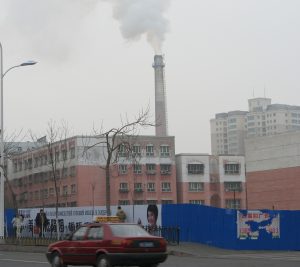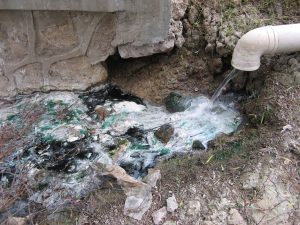Memo #143
By Matthew Gaudreau – mgaud080 [at] uottawa.ca
 Newspaper headlines in China have been speckled with the painful legacies of industrial land contamination. The term “brownfield” is used by post-industrial countries to describe land contaminated by previous industrial use. It is increasingly applied to cases in China. But the context is different, as China still experiences rapid growth. This separates China’s “brownfield” dynamic (constant land use change), from post-industrial countries’ static issues of derelict land.
Newspaper headlines in China have been speckled with the painful legacies of industrial land contamination. The term “brownfield” is used by post-industrial countries to describe land contaminated by previous industrial use. It is increasingly applied to cases in China. But the context is different, as China still experiences rapid growth. This separates China’s “brownfield” dynamic (constant land use change), from post-industrial countries’ static issues of derelict land.
There is an urgent need for formal regulation in China to avoid polluting new land and to avoid a “double pollution” phenomenon where rural and inland areas attract pollutive industries from coastal areas.
Pollutive industries from China’s coastal areas are rapidly relocating, in the absence of coordinated regulation. The continuous development of rural and inland industries is absorbing production that used to be situated along the coast. Between 2002 and 2008, Beijing relocated 200 factories to the periphery of the capital. Since 2005 Guangzhou has or is relocating 427 factories. China faces the burden of an extra ecological footprint.
In Guangzhou, there are some 28 policies governing urban development projects with 16 related to “brownfield” redevelopment. But no existing policy deals with complex redevelopment issues such as converting land that previously contained a chemical plant into a residential complex. In poorer areas, particularly rural and inland areas targeted for industrial relocation, general environmental regulations are less strict and/or less strictly enforced than their urban counterparts. This points to the dual problem of inadequate remediation of current “brownfields,” and the emergence of “double pollution.”
China, with the assistance of the World Bank, strives toward a coordinated and comprehensive policy framework to deal with “brownfield” sites, and the issue of “double pollution” needs to be considered. The disparate policy basket of developed urban centres, and the lack of regulation enforcement in rural and inland areas, must be addressed to establish uniform standards.
In the absence of such standards, along with adequate enforcement, rural and inland development will simply double the problem of China’s industrial land contamination, increasing the long term environmental costs and related social problems.
About the Author:
Matthew Gaudreau – A graduate student at the University of Ottawa’s School of International Development and Global Studies.

As industrialization gains pace inland, energy generation through coal adds to land contamination (Urumqi)

In Nanjing, many pollutive factories have been moved out of the city and into other provinces (Nanjing)
Links:
- Brownfield redevelopment toward sustainable urban land use in China, Chinese Geographical Science, 2007.
- Brownfield Restoration: Addressing the Industrial Pollution of Urban Environments, University of Western Ontario, May 2010. (Video)
- Soil pollution poisons more farmland, China Daily, March 2011.
- Clean up toxic brownfields before China can go green, Xinhua, January 2011.
Related Memos:
- China, Energy, Environment, and Growth – Options for Canada (Memo #140, Video, featuring Wenran Jiang)
- Our other Memos on China